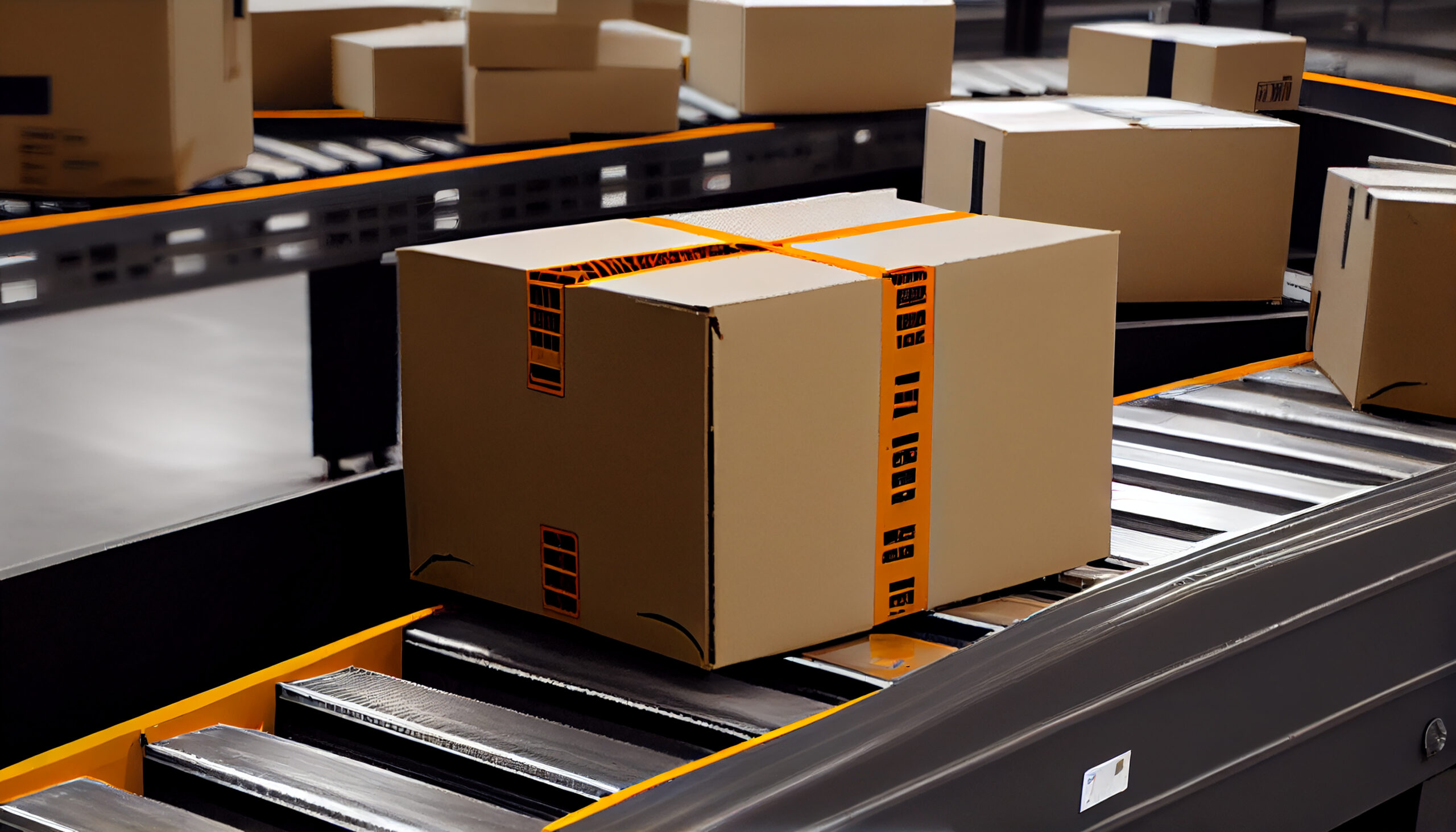The Importance of Packaging for Bulk Materials
The Importance of Packaging for Bulk Materials
1.1 Protecting Product Integrity
When materials—whether grains, cement, animal feed, or powdered chemicals—are handled in large volumes, they’re more vulnerable to moisture, contamination, and physical degradation. Effective packaging for bulk materials maintains product quality during storage and transit.
1.2 Ensuring Safe Transport
Bulk shipments are frequently moved by truck, rail, ship, or barge. Packaging must withstand loading strains, stacking pressures, and vibrations. Properly engineered packaging for bulk materials minimizes accidents, spills, and losses along the supply chain.
1.3 Cost Efficiency
Bulk packaging solutions aim to balance performance with cost. Using too much packaging material drives up costs and environmental impact; too little can cause damage or spoilage. The right packaging for bulk materials optimizes both ends of that equation.
2. Evolution of Bulk Packaging
2.1 From Loose to Contained
Historically, bulk was moved loosely—sacks, barrels, and open-top containers were the norm. Today, many operations use intermediate bulk containers (IBCs), bulk bags (FIBCs), and big bins—each a form of packaging for bulk materials designed to improve efficiency.
2.2 Technological Advancements
Innovations in liners, coatings, and materials have expanded the possibilities of packaging for bulk materials. Anti-static liners, moisture barriers, and dust-proof filling systems reflect how specialized needs are addressed.
3. Types of Packaging for Bulk Materials
1 FIBC (Flexible Intermediate Bulk Containers)
Also known as bulk bags or big bags, FIBCs are versatile and cost-effective. They come in various designs:
-
Single-loop bags for simple handling.
-
Four-loop bags ideal for forklift use.
-
With liners to protect moisture-sensitive materials.
Engineered well, these serve as robust packaging for bulk materials with excellent load capacity.
2 Rigid & Semi-Rigid IBCs
Made from steel, polyethylene, or composite materials, these containers offer sturdy protection. Reusable and refillable, they’re common for hazardous chemicals—another important form of packaging for bulk materials.
3 Bulk Boxes & Drums
Corrugated bulk bins and plastic or steel drums handle up to several tons of materials like powders or granules. Their modularity and ease of stacking make them practical packaging for bulk materials.
4 Bulk Bags on Pallets
Combining FIBCs with pallets adds convenience, enabling automated forklifts to move loads efficiently. This logistic-friendly approach to packaging for bulk materials facilitates warehouse and transportation operations.
4. Materials and Design Considerations
1 Selecting the Right Material
Common materials for packaging for bulk materials include:
-
Polypropylene (PP) fabrics — used in FIBC bags.
-
High-density polyethylene (HDPE) linings — provide moisture and chemical resistance.
-
Steel — used in drums and rigid containers for durability.
Choosing the right material depends on the product’s characteristics and handling environment.
2 Liners & Protective Layers
Moisture-blocking liners, anti-static coatings, and UV-resistant fabrics are often integrated into packaging for bulk materials. These layers preserve the product’s integrity and ensure safety during transport.
3 Intelligent Venting & Access
Controlled-vent bags let air and gases escape during filling, preventing deformation. Adding bottom discharge or skirted filling systems improves functionality—key design features of effective packaging for bulk materials.
5. Regulations & Standards
1 International Rules
Organizations like ISO, UN, and ADR regulate packaging for hazardous bulk materials. Meeting these standards ensures safe, recognized packaging for bulk materials can be used across borders.
2 Traceability & Labeling
Packages must carry labels indicating their contents, handling instructions, and compliance markings. Proper labeling is essential for packaging for bulk materials, especially in regulated sectors like chemicals and food.
3 Quality Control Systems
Manufacturers often use ISO 9001 or Good Manufacturing Practice (GMP) frameworks to systematically monitor quality. Ensuring consistent packaging for bulk materials helps reduce recalls and strengthen customer trust.
6. Sustainability Considerations
1 Reducing Material Waste
Designs that use minimal materials, or materials that are recyclable, play a big role in sustainable packaging for bulk materials. Choosing recondition able containers like IBCs saves waste and cost.
2 Reusability & Return Logistics
Returnable IBCs and pallet-compatible bags promote circularity. The infrastructure to collect, clean, and refill these containers is essential to achieving sustainability goals.
3 Biodegradable & Compostable Options
Emerging solutions include natural fibers, bio-plastics, or recyclable paper solutions. While still maturing, they add an eco‑friendly approach to packaging for bulk materials.
7. Logistics and Handling
1 Loading & Unloading Techniques
Efficient workflows—such as hoists, discharge cones, and automated feeders—reduce product loss and downtime. Well-designed packaging for bulk materials integrates these interfaces.
2 Stacking & Storage
Palletized bulk bags or bins need stable stacking methods. Choosing durable pallets and closed-loft warehouse systems enhances storage safety and logistic flow—hallmarks of good packaging for bulk materials.
3 Multi-modal Compatibility
Not all packaging travels well across different modes (road, rail, sea). Ensuring packaging is ISPM‑15 compliant for wooden pallets helps standardize packaging for bulk materials across trade routes.
8. Industry Use-Cases
1 Agriculture
Seeds, grains, animal feed, and fertilizers are staples moved in bulk. FIBCs with liners are standard for packaging for bulk materials in farming, protecting against pests and moisture.
2 Chemical & Petrochemical
Dust-free loading, electrostatic-safe fabrics, and strong containment make FIBCs and IBCs the packaging of choice. UN-rated options are widely used packaging for bulk materials in this field.
3 Construction
Bulk cement, sand, and aggregates often use paper-based bags or super-sacks—durable that handle heavy loads and harsh environments.
4 Mining
Ores, minerals, and concentrate slurries require corrosion-resistant containers. Large bags with liners or steel drums are examples of industrial here.
5 Food & Beverage
Sugar, flour, cocoa, and grains use food-grade FIBCs and IBCs. Hygienic liners play a key role in food-grade applications.
9. Choosing the Right Bulk Packaging
1 Matching Packaging to Product Properties
Consider moisture sensitivity, flowability, chemical reactivity, density, electrical conductivity, and abrasion resistance. These determine the ideal design.
2 Lifecycle & Reuse
Reusable IBC tanks may cost more upfront but save money over repeated use. Disposable FIBCs might be cheaper initially but increase long-term costs. Balancing lifecycle considerations is essential when selecting.
3 Vendor Collaboration
Working closely with packaging suppliers helps align dimensions, materials, and markings with logistics systems and regulatory demands. Well‑specified packaging for bulk materials reduces headaches during deployment.
4 Cost-Benefit Analysis
Evaluate factors like unit cost, shipping cost savings, product protection, risk of damage, and disposal/return. This analysis guides the selection of efficient.
10. Overcoming Common Challenges
1 Moisture Issues
Moisture often causes product spoilage. Integrating moisture-barrier liners, desiccants, or sealed containers into combats this issue.
2 Dust and Contamination
Containment systems—such as dust‑tight vents and sealed spouts—are essential. These improve workplace safety and ensure regulatory compliance in packaging for bulk materials.
3 Handling Mishaps
Poor lifting points or slit tear lines can cause tears under forklift forks. Reinforced corners, double loops, and load-release features strengthen.
4 Regulatory Shifts
Regulatory changes in transported goods, such as updates in UN packing group rules, require adaptable packaging. Reconfigurable the designs help companies stay compliant.
11. Innovations in Bulk Packaging
1 Smart Packaging
RFID tags, QR codes, and sensors for moisture or temperature make the part of the digital supply chain—enabling real-time tracking and quality control.
2 Advanced Materials
Nano-coatings, anti-fungal barriers, and conductive fibers mitigate product-specific concerns—enhancing the protective capabilities of modern.
3 Modular, Collapsible Solutions
Folding IBCs and collapsible bulk bins reduce return volume once emptied, optimizing logistics and improving sustainability.
12. Implementation Best Practices
1 Packaging Validation Tests
Simulating real-world conditions via vibration, drop, stacking, and environmental chambers ensures can handle its intended use cases.
2 Training & SOPs
Workers must know how to inspect bags, lift containers, and seal efficiently. Incorporating packaging procedures into SOPs ensures proper usage.
3 Continuous Improvement
Regularly gathering feedback and data—like damage rates, rate of return, and delivery issues—helps refine packaging over time. Better packaging for bulk materials emerges from data-informed decisions.
13. Economic and Environmental Impact
1 Total Cost of Ownership
Beyond purchase price, consider filing, transportation, insurance, damage risk, disposal, reuse, and storage.
2 Carbon Footprint of Materials
Greenhouse gas emissions tied to plastic or steel production are substantial. Choosing recycled content, reusable containers, or biodegradable fibers reduces the environmental cost.
3 Circular Economy
Implementing take‑back programs, reconditioning, and recycling transforms packaging into a circular solution. This approach redefines the role of modern supply chains.
14. Case Studies
1 Fertilizer Manufacturer
A fertilizer producer switched to composite IBCs with anti-moisture liners. They reduced product losses by 20% and cut packaging disposal needs by 50%, showcasing the power of optimized.
2 Cement Supplier
A concrete supplier adopted heavy-duty PE-coated paper super-sacks, reducing tears during transport by 35%. The move underscored the importance of selecting packaging tailored.
3 Food Ingredient Distributor
By switching to food-grade FIBCs with certified sanitary liners, the distributor prevented cross-contamination, cut waste, and passed audits easily—demonstrating hygienic in action.
15. Future Trends & Outlook
1 Automation & AI in Packaging
Automated filling, sealing, and inspection systems are reducing human error and increasing throughput. Adaptive systems adjust parameters in real time to optimize each batch of for bulk materials.
2 Smart Materials
New packaging may integrate biodegradable liners that sense spoilage or dissolved contaminants, alerting users via smartphone apps. Futurematerials will be both intelligent and protective.
3 Circular Packaging Platforms
Software platforms that track usage, returns, and remaining life are emerging. As reusable packaging platforms mature, the fully integrated lifecycle of package for bulk materials comes into focus.
Conclusion
Properly designed, tested, and implemented underpins operational success across multiple industries. It protects product integrity, ensures safety, reduces costs, and supports sustainability initiatives. As logistics become more automated, materials more advanced, and regulatory scrutiny tighter, packaging’s role is only growing.
To stay ahead, businesses should:
-
Evaluate product-specific needs—moisture, weight, hazard classification.
-
Test new packaging designs under realistic conditions.
-
Factor reuse, return logistics, and end-of-life into supply chain planning.
-
Embrace digital tracking and smart technologies.
-
Foster industry collaboration to standardize safety and efficiency.
With packaging for bulk at the center of these efforts, companies can optimize performance, reduce waste, and position themselves for the demands of tomorrow’s markets.














Post Comment